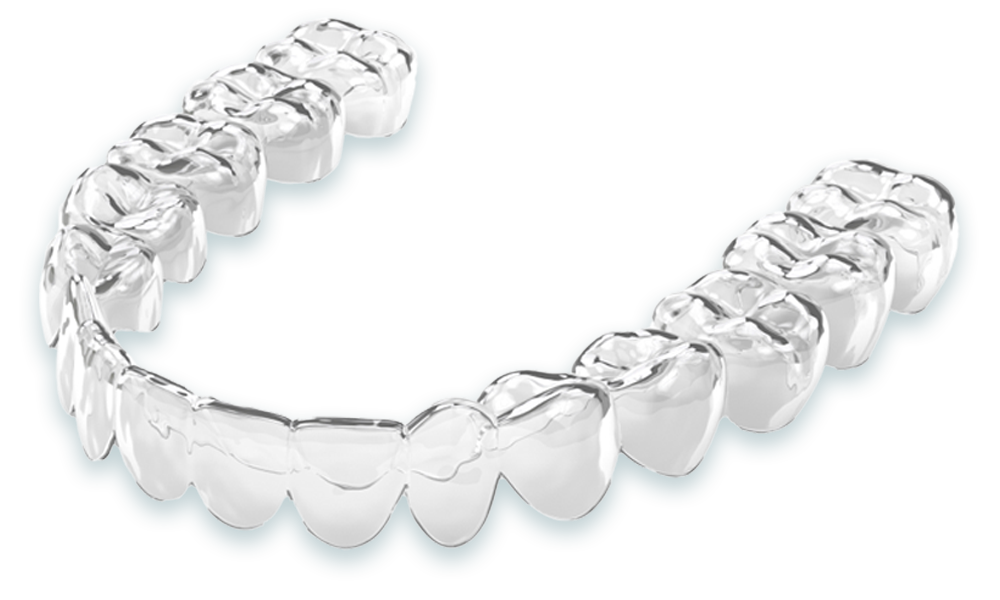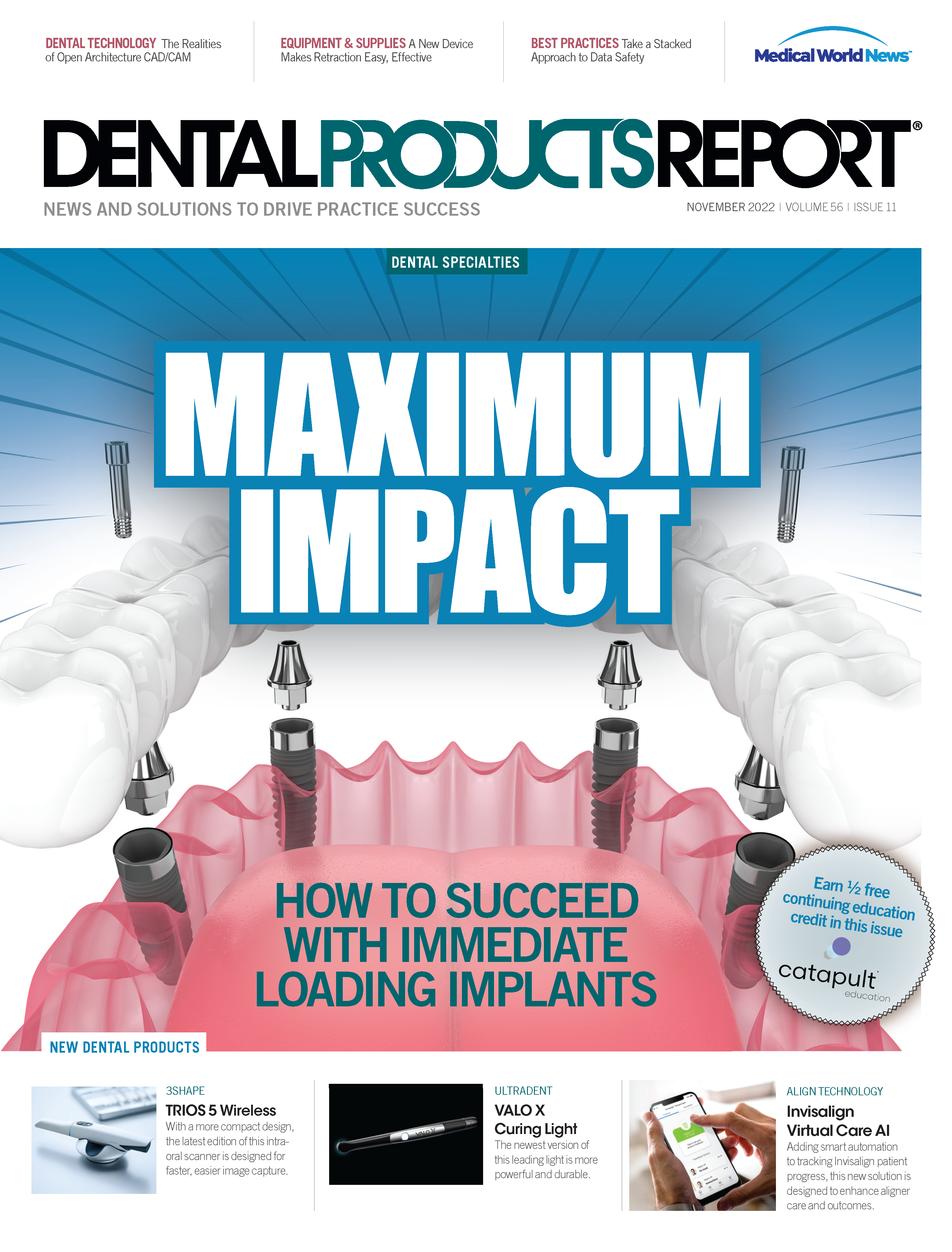Orthodontic Options in GP Settings
Aligner support companies and the variety of clear aligner options allow clinicians to bring orthodontics into the practice, making ortho care more accessible.
©edwardolive / stock.adobe.com

Getting patients into the office can be, well, a bit like pulling teeth. And if such is the case, how can dentists expect patients to follow through with additional treatment, like orthodontic care?
The answer is that they can’t—to the detriment not only of the patient but of the dentist as well. If a practitioner can’t offer the care a patient needs, the odds are the patient isn’t going to return. The idea of orthodonture is already daunting enough, so how can we make the procedures themselves less so?
The answer—bringing orthodontics into the general practice. Although this may not have been practical 20 years ago, the advent of clear aligners and the emergence of numerous aligner support companies have made it much easier for general practitioners to integrate services.
“General practitioners are great caretakers of their patients,” says Alyssa Emory-Carter, DDS. “Their patients trust them. Many…want to treat their patients orthodontically…to ensure…[they] are following recommendations, but [they] have run into obstacles with workflow or the ability to provide the quality of care they…[offer with]…other dental procedures. Now, there are options.”
And patients are looking for these one-stop-shop options among those clinicians with whom they already have a rapport, which takes a lot of the anxiety—and legwork—out of the process. “It really starts with the dental consumer, and the dental consumer is really looking for comprehensive care,” says Jody Rodney, senior vice president of marketing and education at orthobrain. “They want to be able to see the dentist and…the dental team…they know and trust. What’s happening is [that] dental consumers are going into the general practitioner who can…provide full orthodontic treatment.”
The benefits for practitioners are numerous. They can add a revenue stream and attract patients interested in comprehensive care. Precedence Research forecasts that the global orthodontics market, which is growing at a rate of 15.3% a year, will exceed US$ 21.5 billion by 2030 and the US market, whose annual growth is 14.3%, will reach US$ 9.6 billion in 2029.1,2 Therefore, it makes a great deal of sense for those dentists who are considering specialty work to look at orthodontia.
“Offering in-house orthodontics expands…[the] general practitioner-patient relationship and allows the general practitioner to own the patient, versus sending them out to a specialist,” Rodney says, “So, it’s helping the dental consumer, and it’s also helping practice profitability.”
Getting Started
Given that most dentists leave dental school with little orthodontic training, many general practitioners haven’t given it any thought since graduating. Now, however, continuing education, rapidly advancing technology, and clear aligner companies are making the field accessible to the general practitioner.
Since 2020, when technology became critical to weathering the pandemic, digital systems and workflows have increased, and products and software options have improved. Braces systems offered by such companies as LightForce, KLOwen Orthodontics, and Digital IDB, and the advances in clear aligners from Spark and SoftSmile are pushing the industry forward.
“Digital scanning and AI have allowed orthodontists to treat patients with an increased quality of care, as well as from a wider demographic region,” Rodney says. “It has allowed us to create systems,…change our treatment philosophies and sequences, and customize for every single patient in real-time. This should have our dental community excited because it allows for better, more customized care for our patients.”
Although the new options are fantastic, practitioners must nevertheless understand what the design software is doing. “Education is essential,” Rodney says. “Education will drive a 15% growth for a practitioner who engages on at least 2 education modalities with us. Education drives the comfort level and the knowledge level when it comes to clear aligner program implementation, so education is absolutely essential in all that we do.”
Dr Emory-Carter agrees. “I would encourage any general practitioner who wants to begin offering orthodontic services to take courses…especially on growth and development, diagnosis, [and] treatment planning. And then find an orthodontist who is willing to be…[a] mentor…and…assist with case selection,” she says. “Every orthodontist I know has a mentor orthodontist.”
Forming a Partnership
Despite advances in treatment-planning software and aligner design, technology is no substitute for a specialty in orthodontics. Partnering with an orthodontist or an organization that specializes in treatment planning and can provide case support can be extremely beneficial.
“Partnering with a company to help them with case management treatment planning from A to Z can be really essential for a general practitioner,” Rodney says, “because they aren’t specialists. They didn’t go for an orthodontic residency and may not be as confident with the mechanics involved in moving teeth. So, they really need to partner with an organization that can help support them with a full, 360-degree approach.”
Once general practitioners are treating patients with malocclusion, it’s important for them to remember that some cases will be beyond their ability and best left to a specialist. Luckily, there are companies that provide direct support to general practitioners who may not have the necessary skill set. One such entity is orthobrain which helps dentists integrate orthodontics into their practice and provides education, support, and comprehensive case management.
Dentists register with the company online, complete an initial patient assessment, and submit patient records to the platform. An orthobrain orthodontist reviews the files and creates a treatment plan.
“orthobrain offers a total solution; we do all the treatment planning, so we remove many of the barriers and increase the confidence of the general practitioner that is incorporating clear aligner therapy for their patients,” Rodney says. “After the dentist has approved the treatment plan, we take it from there as far as manufacturing the plastic, making sure that there’s full support and 360 engagement, from our clinical team.…Then, aligners are delivered within 12 to 14 days.”
Orthobrain’s SimplyClear aligners are manufactured with a softer, more pliable material, making them more comfortable for patients.

Even after the aligners are in hand (or in mouth, so to speak), orthobrain continues to support the clinician.
“orthobrain isn’t just about the plastic,” Rodney says. “We say, ‘go beyond the plastic’; it’s being able to support a general practitioner through full case management, treatment planning, and all of the essential business components. We give absolute, 100% guidance to the general practitioner to help them through the entire process, and this support is something that we feel that they should be confident in,” Rodney says. “Because of the concierge-style way that we interact with our general practitioners, we get to know them individually, and we understand where they are clinically.”
This understanding of clinical capabilities is particularly important when it comes to deciding which cases can be treated by the general practitioner and which should be referred out.
“If we have a case that is submitted or comes through that we feel is beyond the general practitioner’s clinical level, we will either recommend that they send it out to a specialist or suggest a different process in order to make sure that the patient is well situated and gets the outcome that they’re looking for,” Rodney says.
In the end, a positive outcome for everyone is the goal. In addition to owning her own orthodontic practice in Sherman, Texas, Dr Emory-Carter serves as a clinical advisor for On Demand Orthodontist, a company whose “bottom line is [that] we want what is best for the patient in their orthodontic needs, regardless of where the patient is treated,” she says. “We want to bridge the gap as general practitioners begin to explore the field of orthodontics.”
On Demand Orthodontist offers a variety of services based on each of their general practitioner’s needs. This support includes diagnosis and treatment planning, orthodontic monitoring, refinements, and direction on patient care. It also provides materials, including aligners, scan boxes, and retainers. Essentially, Dr Emory-Carter says, the company is a “virtual orthodontic associate” for general practitioners, allowing them to keep the patient in their practice while a partner orthodontist helps oversee the patient’s care. This collaboration allows for optimal care, benefiting patients as well as dental and orthodontic professionals.
“On Demand Orthodontist takes the obstacles out of the way and provides the general practitioner… [with] a way to…[give] patients…the highest quality of care…with the knowledge, systems, guidance, and care of an orthodontist,” Dr Emory-Carter explains. “The clinician’s experience is smooth from beginning to end. Essentially, On Demand Orthodontist wants to ensure the care of the patient comes first, regardless [of] who is treating the patient, as well as promote collaboration between the general practitioner and specialists, which is something we as a profession have room to grow upon.”
Implementing the Tools
Although orthodontic tools for general practitioners are available and advancing quickly, the most important factor is to successfully execute a treatment plan, and at this point, that’s up to the clinician, not the technology. Emerging tech is undeniably changing the playing field, and artificial intelligence is streamlining treatment planning and helping practitioners make informed decisions based on large sets of data, but the human component remains critical.
“The No. 1 thing to keep in mind is that the aligner is just a tool,” Dr Emory-Carter says. “And the tool will only be as successful as an accurate diagnosis and treatment plan. An author doesn’t have a best-selling book because of the pen they used.…And we shouldn’t expect a good result if we do not have a plan in place.”
This plan becomes increasingly important as the general practitioner orthodontic field continues to expand, particularly with the growth of the clear aligner industry. Ultimately, however, despite all the new bells and whistles, if a general practitioner is thinking about adding orthodontics, they need to be committed to quality care.
“Clear aligner therapy will undoubtedly take up more share of chair,” Dr Emory-Carter predicts. “As the product improves and our knowledge of plastic biomechanics continues to improve for predictability, the ability to treat advanced cases improves. There will be added features to the aligners that change the way we practice with aligners and additional considerations with surgery and sleep and breathing disorder treatments. This will allow clinicians more flexibility in honoring the patient’s preference on which tool to use to treat them.”
References
- At 14.3 percent CAGR, US orthodontics market size to hit USD 9.60 billion by 2029. Globe Newswire; September 20, 2022. Accessed October 2, 2022. https://www.globenewswire.com/news-release/2022/09/20/2518999/0/en/At-14-3-CAGR-US-Orthodontics-Market-Size-to-Hit-USD-9-60-billion-by-2029.html#:~:text=Pune%2C%20India%2C%20Sept.,Market%2C%202022%2D2029%22.
- Orthodontics market size to surpass US$ 21.5 billion by 2030. Globe Newswire; January 28, 2022. Accessed October 3, 2022. https://www.globenewswire.com/en/news-release/2022/01/28/2375147/0/en/Orthodontics-Market-Size-to-Surpass-US-21-5-Billion-by-2030.html

ACTIVA BioACTIVE Bulk Flow Marks Pulpdent’s First Major Product Release in 4 Years
December 12th 2024Next-generation bulk-fill dental restorative raises the standard of care for bulk-fill procedures by providing natural remineralization support, while also overcoming current bulk-fill limitations.